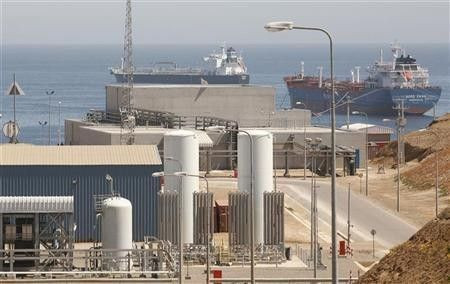Kenya says LNG facility to cost about $500 million

Kenya expects a planned liquefied natural gas terminal to cost $500 million and take 3-5 years to build once it floats a tender in February 2012 as it seeks to diversify sources of electricity to meet rising demand, an energy official said on Wednesday.
The LNG terminal at the port city of Mombasa will have two storage tanks, each holding some 35,000 tonnes of gas, the energy ministry's permanent secretary, Patrick Nyoike, told Reuters on the sidelines of an energy conference.
East Africa's largest economy is struggling with ageing infrastructure in its energy sector and the country is plagued with chronic power cuts and higher electricity bills, which critics say have discouraged investments.
We are going to tender, may be in three months we will deliberate and award the contract, Nyoike told Reuters on the sidelines of a national energy conference.
After that the developer will take between three and five years. It is expensive, it is about half a billion dollars, adding that he expected financing to come from private sector participants.
We are making it a private sector initiative. All what we are doing is to provide land for the facility at Dongo Kundu (Mombasa), he said.
Regional trade bloc, East African Community, is pushing its five member states to link up energy resources in an effort to bolster the region's energy security.
A recent EAC study shows that a pipeline to move natural gas from Dar es Salaam to the Kenyan port city of Mombasa would cost up to $630 million.
Due to major gas discoveries in Tanzania's deep-water offshore region, Kenya's southern neighbour has managed to raise its natural gas reserves to more than 10 trillion cubic feet (tcf) from a previous estimate of 7.5 tcf.
Kenya's government says it has installed power supply capacity of 1,460 MW, against a consumption of about 1,300 MW, leading to shortfalls when factors such as reserve margins are accounted for.
Kenya aims to raise capacity to over 21,000 MW by 2030 by developing a mix of plants powered by hydro, wind, geothermal, coal and nuclear.
© Copyright Thomson Reuters {{Year}}. All rights reserved.





















